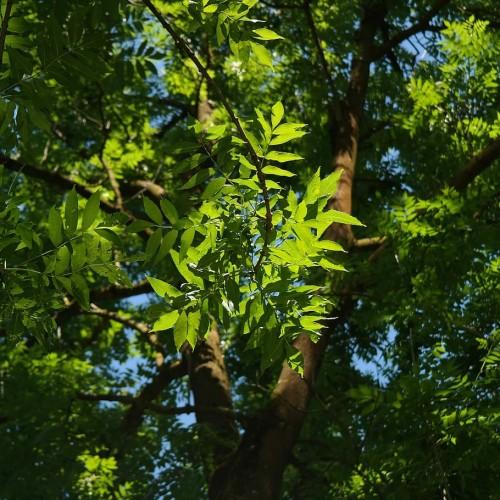
ash
Fraxinus sogdiana
Cycle:
Perennial
Watering:
Average
Hardiness Zone:
6 - 8
Flowers:
Flowers
Sun:
Full sun
Fruits:
Fruits Ready In Fall
Leaf:
Yes
Growth Rate:
Low
Maintenance:
Moderate
Salt Tolerant:
Yes
Invasive:
Yes
Care Level:
Medium
watering
Ash (Fraxinus sogdiana) should be watered about twice a week, when the top 2 or 3 inches of soil become dry. Don't let the soil dry out completely, as this can cause the leaves to wilt. You should water deeply to make sure the entire root system is getting enough moisture. When watering, use room temperature water and water until you see it draining from the bottom of the pot.
sunlight
The ash tree (Fraxinus sogdiana) grows best in full sun with at least 6 hours of direct sunlight per day. The Central Asian native does tolerate shadier spots, although fewer sun hours will affect its growth rate and overall health. The plant does best in temperatures between 10 and 24 degrees Celsius (50-75 Fahrenheit). Ash trees may suffer if exposed to temperatures lower than 8 degrees Celsius (45 Fahrenheit).
pruning
Pruning of Ash trees (Fraxinus sogdiana) should be done annually in late winter or early spring, prior to bud break. When pruning an Ash tree, the goal is to maintain healthy foliage, as well as a branching structure that is able to support its canopy. To do so, match the desired shape of the tree to the established branch pattern. Start by removing dead, diseased, or broken branches, as well as any crossing branches. Remove any damaged terminal buds, as these cause the tree to put its energy into producing new shoots instead of leaves and fruit. If the tree is overgrown, you can selectively reduce canopy size and shape, while maintaining the tree's natural form. Aim to keep the crown of the tree thin and open to maximize the amount of light and air circulation reaching the branches. Last but not least, be sure to use proper pruning methods, such as making a clean, brush-free cut, and avoiding heading back of the stems or removal of the entire branch.
Season
Hardiness Map
FAQ
Are sunflower seeds edible?
Yes, sunflower seeds are edible and are enjoyed around the world. Sunflower seeds have a nutty flavor and can be eaten either raw or roasted. Popular forms of eating sunflower seeds include tossing them in salads, sprinkling them in stir fry dishes, using them as an ingredient in baked goods, and snacking on them as a healthy and tasty snack. Sunflower seeds are available both with and without their shells, depending on the preference of the consumer.
Are zucchini plants cross-pollinated with squash plants?
Yes, zucchini plants can be cross-pollinated with squash plants. Cross-pollination in zucchini is most common when two different varieties of zucchini are grown in close proximity, allowing wind or insects to transfer pollen from one plant to the other. Cross-pollination with squash can occur when the two plants are within a close vicinity and share the same pollinators.
